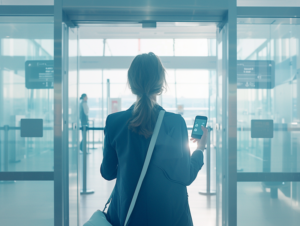Denver International Airport (DIA) has brought facial recognition technology to 15 gates to streamline the boarding process for international travelers. The system compares travelers’ photos to government-stored images, such as passport and visa photos, and is part of a broader U.S. Customs and Border Protection (CBP) initiative to improve international flight security.

DIA officials stated that the facial recognition process takes about three seconds, making it faster and more efficient than manual passport checks by gate agents. While the technology aims to speed up boarding and improve accuracy, travelers can opt out by notifying gate agents, who will manually scan their passports.
The new system is part of a larger trend across U.S. airports, including those in cities like Baltimore, Atlanta, and Los Angeles, where biometric technology is increasingly used for security purposes. Despite privacy concerns raised by civil liberties groups, CBP and DIA officials emphasize that they adhere to strict privacy standards, including deleting photos of U.S. citizens within 12 hours after the scan.
The CBP’s biometric airport program has its roots in congressional mandates and efforts to enhance border security and streamline international travel. In 2004, CBP began collecting fingerprints and photos of non-U.S. citizens during primary inspection at air ports of entry. In 2013, CBP took over entry and exit operations and started testing various biometric options for arrival and departure processes.
The program gained significant momentum in 2016 when Congress provided up to $1 billion in funding for CBP’s biometric entry-exit program through the FY 2016 Consolidated Appropriations Act. That same year, CBP launched a pilot facial recognition program called the Departure Information Systems Test (DIST) at Hartsfield-Jackson Atlanta International Airport.
In 2017, President Trump’s Executive Order 13780 called for the expedited completion and implementation of a biometric entry-exit tracking system. This led to the development of the Traveler Verification Service (TVS), which uses a cloud environment for facial recognition.
Since then, CBP has rapidly expanded its biometric capabilities. By 2022, the Biometric Entry-Exit Program was deployed for arrivals at 238 U.S. airports, including all preclearance locations. The program has evolved to include partnerships with airlines, airports, and sea cruise lines to integrate biometric technology into existing travel processes.
Sources: The Denver Post, International Airport Review
–
September 5, 2024 – by Cass Kennedy







Follow Us